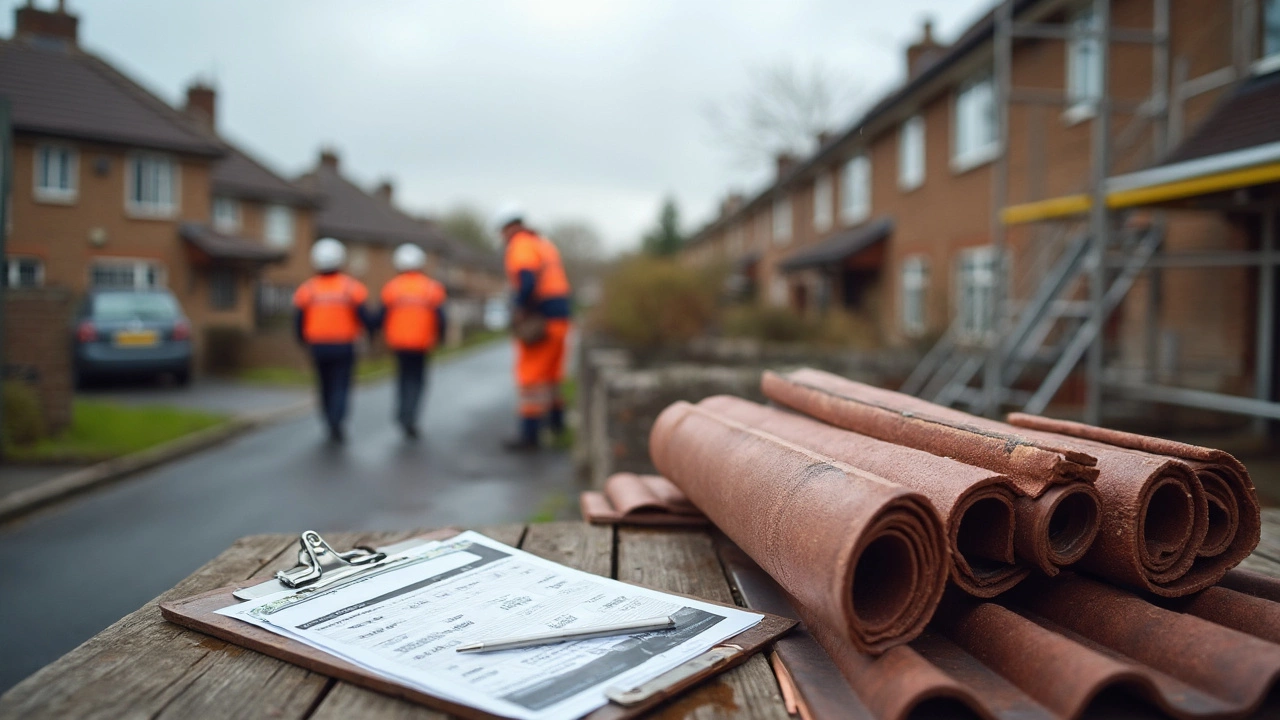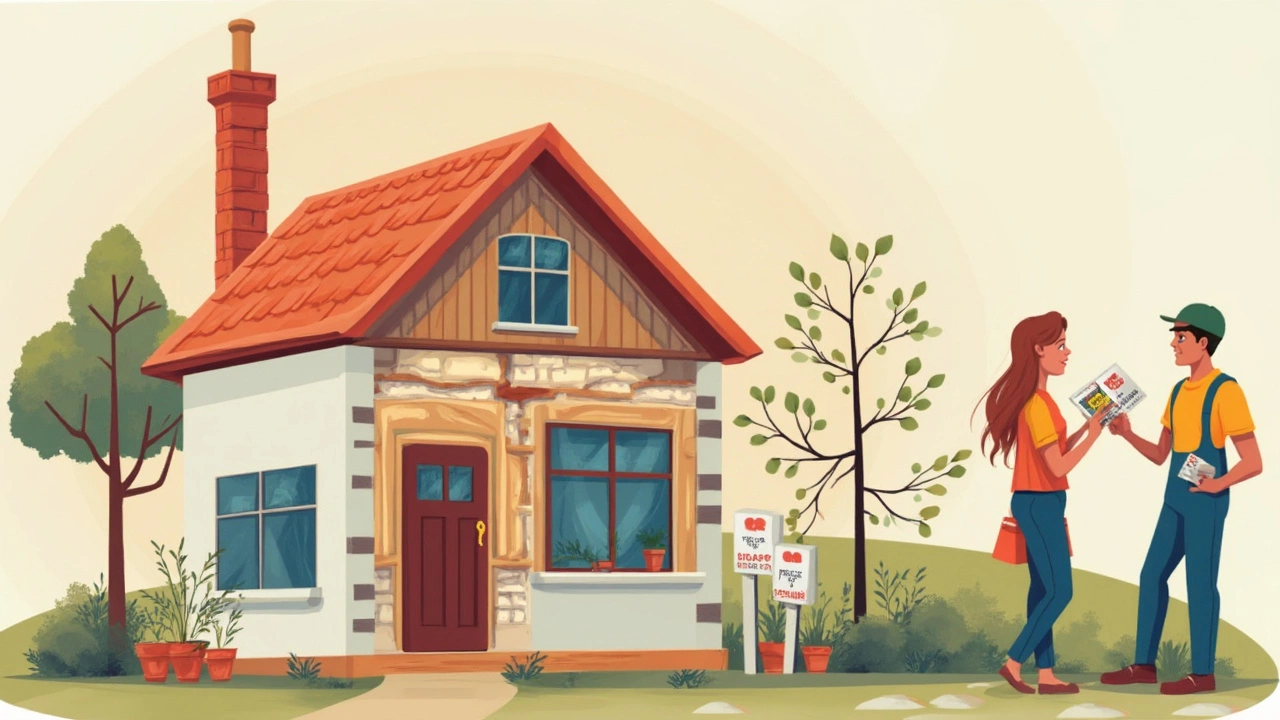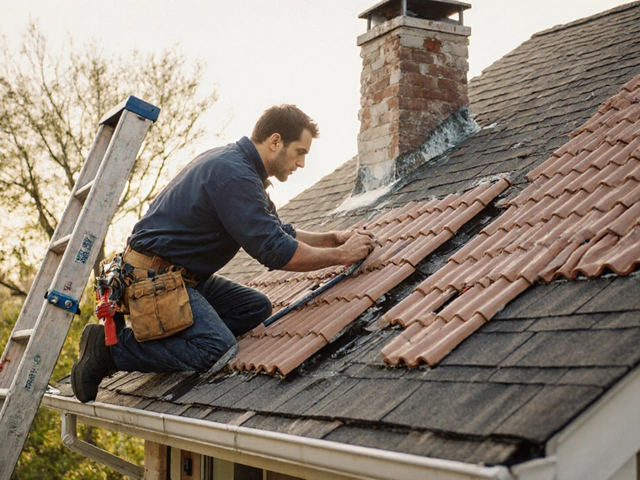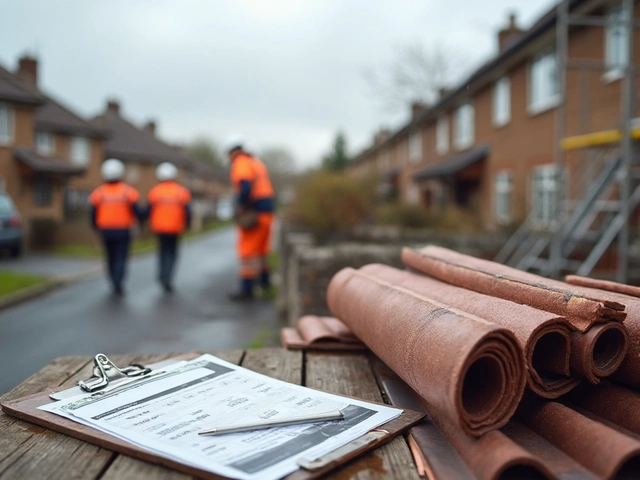Roof Work Costs: Why Roof Repairs and Replacements Hit Your Wallet Hard

Ever call a roofer for a quote and gasp at the price? You’re not alone. Most people have no idea how much goes into getting a solid roof over their heads. My kid Quincy once asked why our new shingles cost more than our family vacation—that stings, but there’s a reason.
It’s not just about slapping on a few shingles. Roof work means expensive materials, trained crews, and crazy high insurance bills. Roofers put their lives on the line every day—one slip, and things can go sideways fast. Add in surprise repairs and all the rules homeowners have to follow, and costs go up even more.
If you’ve ever wondered what’s driving those prices, you’ll want to keep reading. We’re going to break down where every dollar goes, and how you might be able to save a little next time you’re up against a leaky roof.
- What Really Goes Into Roofing Costs?
- Material Prices: Not Just Shingles and Nails
- Labor and Safety: The Human Side of the Price Tag
- Insurance, Permits, and Hidden Expenses
- How to Make Roofing Work More Affordable
What Really Goes Into Roofing Costs?
People sometimes think roof work is just the cost of shingles, a ladder, and some elbow grease. If only it was that simple. The truth is, a whole pile of stuff adds up when you’re talking about roofing costs.
First up, there’s the crew. Professional roofers spend hours on steep, hot, or icy surfaces. They have to train, use special gear, and they don’t come cheap. Labor often makes up about 60% of a typical roof repair or roof replacement bill. Most companies pay workers more per hour than lots of other construction trades because roof work is dangerous, especially when you factor in carrying heavy bundles or working around weather.
Then there’s the prep work nobody sees. Before installers touch a single shingle, they haul away old layers, inspect for damage, set up fall protection, and tidy up your yard afterward. Good companies never skip these steps because cheap shortcuts now mean monster leaks and repairs later.
- Professional crew wages and benefits
- Safety equipment, like harnesses and scaffolds
- Specialized tools and machines for tough roofs
- Dumping fees for all that old roofing junk
- General liability and worker’s comp insurance
Insurance might shock you—it’s massive. Roofing has one of the highest rates for workers’ comp, sometimes costing a business up to 30 cents for every dollar they pay someone. Just paying for a business license, truck, and advertising adds up too.
| Category | Percent of Total Cost |
|---|---|
| Labor | ~60% |
| Materials | ~30% |
| Insurance, Permits, & Overhead | ~10% |
On top of all of this, there are inspection fees, city permits, and taxes. A typical day on the roof includes more paperwork than most people imagine. So when you see that final bill, remember: you’re getting a roof that will (hopefully) protect your home for decades—and a team risking a lot to put it there.
Material Prices: Not Just Shingles and Nails
People usually think of roof work as just a matter of shingles and a hammer, but it’s way more complicated. The stuff on your roof is only part of the total bill—and even those prices are climbing. In 2024, a basic asphalt shingle bundle cost more than double what it did just five years ago. Metal roofs? Those can cost three to five times more than shingles, and then you’ve got tile, slate, and synthetic options for those who want to go really fancy (and expensive).
Roofing isn’t just about the visible layer. There’s a whole stack of materials hidden underneath, each important in its own way. Underlayment keeps out water, ice and water shield goes along the edges, and flashing seals up tricky spots around chimneys and vents. Miss one layer and suddenly you’re looking at leaks and rot. Nobody wants to replace a roof twice.
Let’s break down the usual parts of a roof repair or replacement:
- Shingles or panels: The "face" of your roof—choices range from asphalt to metal or tile.
- Underlayment: Barrier that keeps moisture in check. Synthetic is more expensive but lasts longer.
- Flashing and drip edge: Helps direct water away from joints and edges.
- Fasteners and adhesives: Required for, well, literally holding your whole roof together.
- Ventilation items: Proper vents mean your attic won’t cook in the summer or collect mold in winter.
Another thing—material waste is part of every job, especially with odd-shaped roofs or lots of corners. That means contractors have to buy extra materials just to make sure they have enough for awkward cuts or replacements.
Here’s a snapshot of average material costs around May 2025 for a regular 2,000 sq. ft. roof:
| Material Type | Cost per Sq. ft. |
|---|---|
| Asphalt Shingles | $1.60 - $2.75 |
| Metal Panels | $4.50 - $7.00 |
| Clay or Concrete Tile | $7.00 - $14.00 |
| Underlayment (synthetic) | $0.60 - $1.25 |
All those numbers add up quick. When someone quotes you a price, most of it’s right here—in the cost of making sure your roof actually works and keeps you dry for at least a couple decades.

Labor and Safety: The Human Side of the Price Tag
There's a reason labor is the biggest slice of your roofing costs bill. A lot of people think roofers are just handy with a hammer, but this job takes real skill. If you look at what roofers have to deal with, it’s no wonder they charge what they do.
First off, working on a roof is risky business. The U.S. Bureau of Labor Statistics keeps track of job injuries, and roofing is always near the top for accidents. Even a one-story roof can mean hospital time if something goes wrong, which is why roofers take safety super seriously.
They need helmets, harnesses, and safety lines for every job, and those don’t come cheap. Training costs more time and money. Every crew member has to know how to spot trouble—rotten wood, cracked beams, hidden water damage—and fix it the right way, not just patch it up. A rookie mistake means leaks or repairs down the road.
Here’s a real kicker. Roofing companies also deal with massive insurance premiums because of all that risk. If someone gets hurt fixing your roof, that insurance bill helps cover them. But it adds a heavy chunk to their business costs, which trickles down to the price you pay.
| Labor Cost Factors | Impact on Price |
|---|---|
| Experienced crew salary | 35-45% of total cost |
| Safety equipment & training | 10-15% of total cost |
| Worker's comp insurance | 7-10% of total cost |
Every job is different, but most of your bill goes to keep skilled roofers safe and paid fairly. That’s something I always remind Quincy about—nobody wants someone cutting corners six feet above your living room just to save a few bucks.
- If the estimate is suspiciously low, ask if the crew is trained and insured. Cheap roofers might skip safety measures—big red flag.
- You get better results sticking with crews that invest in their people and equipment, even if you pay a little more.
Insurance, Permits, and Hidden Expenses
Surprise costs sneak up fast when it comes to roof work. People mostly think about the price of shingles or the crew doing the job, but there’s a whole layer of extras nobody brags about on social media. The first giants on the bill? Insurance and permits.
Roofers need special, expensive insurance because scaling roofs is risky business. If something goes south—like a roofer getting injured or a ladder falling on a car—insurance takes care of it. That coverage doesn’t come cheap. On average, contractors pay more for liability insurance in roofing than nearly any other home trade. In some states, it can be over $20,000 a year for a small crew.
Then you’ve got permits, required by almost every city before any roof repair or replacement starts. Without the right paperwork, the job can get shut down, or you might end up with a fine. The cost for permits isn’t one-size-fits-all—it can be as low as $100 or shoot past $500 in busy metro areas. And honestly, you don’t want to skip them. If you do, your homeowner’s insurance might deny a future claim, and good luck selling your house without the right official stamps.
Now, let's talk about the "hidden stuff"—the sneaky expenses people only find out about once work begins. Here’s what often pops up:
- Rotted wood or old decks hiding under your shingles that need replacement
- Extra layers of old roofing that need to be hauled away
- Special disposal fees for old shingles, especially if they contain asbestos (sometimes found in roofs from the 1980s and earlier)
- Sudden structural problems, like sagging rafters, that aren’t visible till the old roof is off
Here’s a quick look at some common extra roofing costs you might see on your bill:
| Extra Service | Typical Cost Range |
|---|---|
| Roof Deck Repair | $500 - $1,200+ |
| Permit Fees | $100 - $600 |
| Disposal of Old Roofing | $30 - $80 per ton |
| Structural Fixes | $1,000 - $5,000 |
It’s always a good idea to ask your roofer for a breakdown of what’s included, what’s not, and what could raise the bill. Never hurts to get it in writing. Knowing about these add-ons turns a surprise expense into something you planned for—and that can save a lot of stress (and a big dent in your wallet).

How to Make Roofing Work More Affordable
Roof work doesn’t have to empty your bank account. There are real ways to keep costs under control while still making sure the job gets done right. If you play your cards right, you can hang onto a chunk of your savings—and still keep your home dry and safe.
First, always get a few quotes. Don’t go with the first contractor who shows up. Most experts say getting at least three bids helps you spot high prices or spot a deal that’s too cheap to be real. A legit roofing cost quote will break down the price for materials and labor, so you can compare apples to apples.
Timing can make a huge difference. Roofers are swamped during storm seasons and early fall. If you can schedule work for late winter or early spring, you could score better prices—they want to keep their crews busy during slow stretches.
Material choice is big, too. Everyone loves the look of high-end metal or slate, but asphalt shingles get the job done for less. Ask about different roof repair materials and see where you can save without risking leaks. There are even "architectural" shingles now that look sharp but don’t cost an arm and a leg.
- Ask your contractor about leftover or surplus materials—they might have extras from a recent job, and some will cut you a deal instead of wasting that stuff.
- Some local governments offer rebates or tax credits for energy-efficient roofing. Check local housing or energy websites for updates in 2025. It’s free money.
- Handle simple prep yourself, like moving patio furniture or trimming low branches, so the crew wastes less time (and you spend less on labor).
- Make sure your home insurance really covers roof damage. If you’re replacing a roof after a storm, your policy might save you thousands—if you know how to file the claim.
If you’re handy, some homeowners patch small leaks themselves. But don’t get cocky—serious roof replacement is risky. Messing up could actually cost you more in the long run, especially with insurance or warranty issues. Stick with professional roofers for major jobs, but ask where you can help or cut corners safely.
To get a clearer picture, here’s a quick sample of how roofing expenses usually break down on an average project in 2025:
| Item | Estimated % of Total Cost |
|---|---|
| Materials | 45% |
| Labor | 40% |
| Insurance & Permits | 10% |
| Other (Disposal, Overhead) | 5% |
Bottom line: You’ve got ways to save if you’re smart. Be proactive, ask questions, shop around, and don’t settle for mystery numbers. Whether you need a simple patch or a full roof replacement, a little planning now can spare you a headache and a fat bill later.

